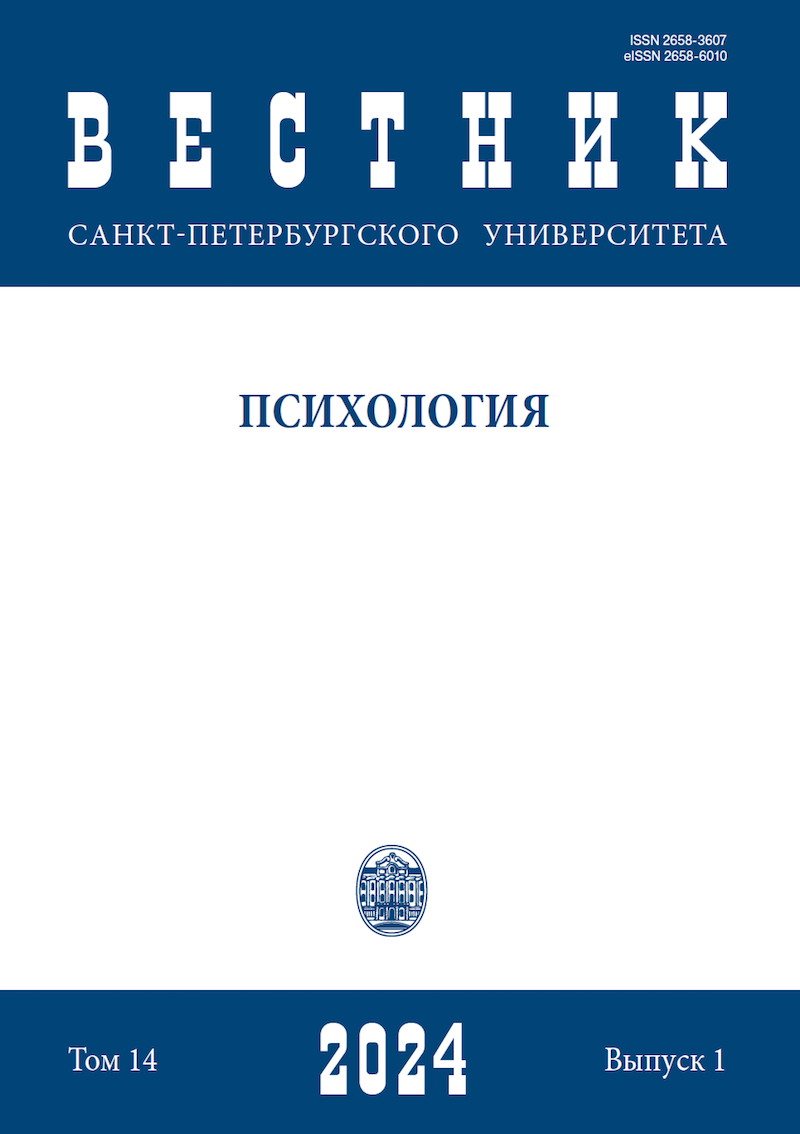Fears of modern preschool children in a sociocultural context
DOI:
https://doi.org/10.21638/spbu16.2024.103Abstract
The study is devoted to the problem of exposure of the senior preschool age children to various kinds of fears in connection with the sociocultural context, which is understood as a factor of the macroenvironment. The beginning of the 2020s is associated with large-scale events that have a significant impact on the life and well-being of the population. This is the COVID-19 pandemic (2020–2021) and the aggravation of the socio-political situation in the world (2022–2023). The study involved 127 children aged 5–6 years attending preschool educational organizations, who were offered the “Fears in the Houses” methodology by A. I. Zakharov and M. A. Panfilova. Data from a parent survey and analysis of documentation from preschool educational organizations were also used. It was found that the profiles of fears of children examined in 2019, 2021 and 2023 are quite similar; most of the identified fears in modern preschoolers correspond to age standards for children 5–7 years of age according to A. I. Zakharov, which allows us to talk about the universality of the age-related patterns and reasons for the appearance of fears in children described by him. The specificity of the cultural and historical context of modern childhood has manifested itself in the fact that the list of frightening characters has changed significantly: the heroes of virtual games in the horror genre are replacing the heroes of traditional children’s fairy tales. A comparative analysis of the results obtained in 2019, 2021 and 2023 confirmed the greater exposure to fears of preschoolers during the COVID-19 pandemic, and the absence of an increase in the number of fears in children amid the worsening geopolitical situation in the world. It was found that during the pandemic, not only the number of specific medical fears in children increased, but also the number of fears that are not directly related to illness and death increased, which demonstrates the substitutive nature of fears in children and is of great importance for practical psychology.
Keywords:
preschool age, children's fears, social environment, COVID-19 pandemic
Downloads
References
References
Downloads
Published
How to Cite
Issue
Section
License
Articles of "Vestnik of Saint Petersburg University. Psychology" are open access distributed under the terms of the License Agreement with Saint Petersburg State University, which permits to the authors unrestricted distribution and self-archiving free of charge.




